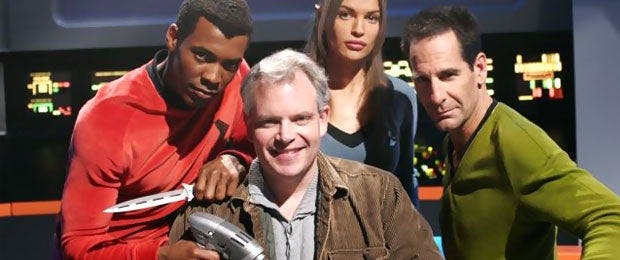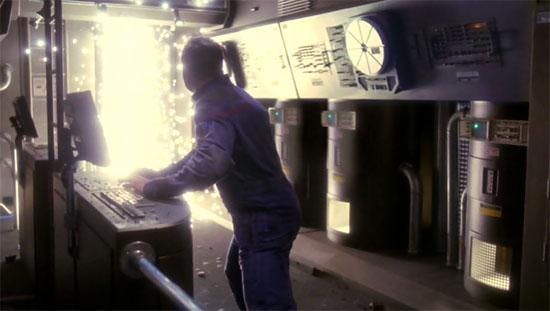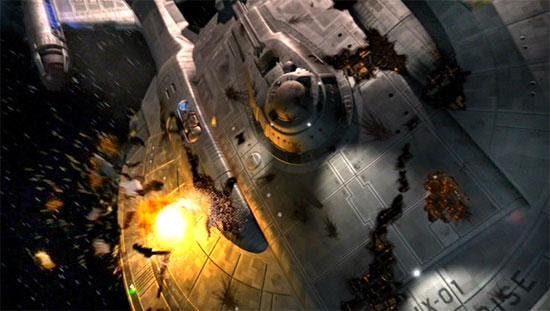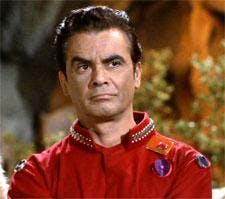Published Apr 26, 2014
Meet Manny Coto, The Man Behind Enterprise
Meet Manny Coto, The Man Behind Enterprise

Jack Bauer always finds a way to save the day, and Manny Coto almost pulled off something similar. Why compare Coto to Bauer? What’s the Bauer-Coto connection? Easy. Coto spent two years working on Star Trek: Enterprise, writing or co-writing the stories or teleplays for 14 episodes across seasons three and four, and serving as co-executive producer during season four. Year four was widely considered the show’s best, reinvigorating the Trek fan base and reportedly coming oh-so-close to securing a fifth season of Enterprise. Post-Enterprise, Coto went on to join 24 as executive producer for its fifth season, putting Kiefer Sutherland’s Jack Bauer through his paces until the series ended in 2010. Now, four years later, Jack is back in 24: Live Another Day, a 12-episode event series that will kick off May 5 on FOX. StarTrek.com caught up with Coto for a candid half-hour conversation in which he looked back at his days with Enterprise and previewed 24: Live Another Day. Below is part one of the interview. Visit StarTrek.com again tomorrow to read part two.
We’re going to get into specific questions about Enterprise, but let’s start with a broad one. What are the first things that come to mind when you think back to your time with Enterprise?
COTO: The first thing I remember is when I walked in for my first day. Brannon (Braga) was in his office, standing at the window, smoking a cigarette and looking desperate, like everything was falling apart. They were in a hole, script-wise, and I really got the sense that Brannon was kind of at the end of his rope, so to speak, as far as getting scripts. So it was an interesting sense of “Wow, desperation, this is either going to work well or it’s going to be a disaster.” But I’ll never forget Brannon standing at the window, staring out glassy-eyed. It’s kind of how we are now on 24. I think every show runner gets to this place somewhere in the middle of a season because it’s just an incredibly hard job with so much to do that it becomes overwhelming. The other thing that I remember is that when I came in to meet about the show, Brannon had a Borg arm that they were testing. It was an arm, I think, for season two, when they find the Borg in the ice. I’ve never forgotten that. That was pretty exciting.
You wrote or co-wrote thestory or teleplay for 14 episodes of Enterprise, from “Similitude” to “Terra Prime,” and you had your hands on a lot more in your capacity as a producer. Please go through some of the episodes with us, starting with “Similitude.”
COTO: I’m very proud of “Similitude.” I watched that again recently because I did the commentary for the Blu-ray. I was very pleased with how that held up. To me, that was a very good Star Trek premise. It had an idea that could only be done in a science-fiction context. It’s not science-fiction in the sense of cowboys in space, but it’s actually the question of “What if an individual can be grown in seven days? And what if that individual could then be harvested to help another individual?” I thought it presented a fascinating dilemma and a great opportunity for drama. Also, that was very sentimental for me because it was the first episode of Star Trek that I’d written, and I was very pleased with the way it came out. The entire experience on that was incredibly magical.

“Azati Prime” was a pure adventure, and you basically ripped apart the Enterprise…
COTO: The Xindi almost destroyed the ship, and that was an action sequence that had never really been seen before on Star Trek, on a show. We were doing a long season arc and we ended that episode with the Enterprise really being battered. We had a shot where a hole opened up in the side of the ship and people were flying out into space. You see that a lot in the J.J. Abrams movies, but back then, on Enterprise, it was kind of a novel, interesting and frightening idea. So “Azati Prime” was a roller coaster ride from beginning to end. It was very 24-like, for lack of a better comparison.



Most people, yourself included, we understand, think of “Demons” and “Terra Prime” as two halves of a whole and also as the show’s de facto finale, “These Are The Voyages…” notwithstanding. Your thoughts?
COTO: I really liked those episodes. My heart was really in that because I felt it was a fitting end for the series. The show ended up coming back to Earth and to our solar system, and the idea was that humanity still had one hurdle to go through, and that was a part of humanity was not accepting of aliens and aliens on our world, because some people felt we were being corrupted. We had to exorcise our last vestige of xenophobia. I thought it was a really fitting end for Enterprise because one of the basic tenets of Star Trek is Infinite Diversity in Infinite Combinations. This was a way to address that idea, that we’d not quite reached there yet. You had a character played by Peter Weller who wanted aliens to leave the Earth and was against comingling with aliens. And we ended with a wonderful speech by Captain Archer and a wonderful performance by Scott Bakula in front of the nascent Federation, which kind of laid down the idea for Star Trek. It basically said that despite the myriad species we’re all the same and we all share the same heart. I remember being there on that day for the shooting of that. We knew at that point that this was the last season, so it was particularly touching to know that this was a fitting finale, as I saw it, for the show.
Which brings us to “These Are the Voyages…,” which was written by Braga and Rick Berman. It was the last episode, as you noted, but not necessarily the finale…
COTO: I’m not saying that to deride “These Are the Voyages...” We – Brannon and Rick and I – always looked at “Demons” and “Terra Prime” as the finale for Enterprise and “These Are the Voyages…” was intended to be a finale for the entire 18-year run of Star Trek, starting with Next Gen all the way to Enterprise. That’s how it was looked at.

When Berman and Braga made you executive producer for season four, what was your personal mission? As a life-long Star Trek fan, what did you hope to bring to Enterprise?
COTO: I wanted to tell more complex stories. One of the first things I wanted to do was to tell stories in three-episode arcs, where we could actually create little mini-feature films. Television has become… an episode is now 42 minutes of actual content. It’s very hard to tell a story with a beginning, middle and end when you only have 42 minutes. The Original Series, they had 50 minutes. They had almost an hour to tell a story. That makes a difference. I wanted to tell epic tales, so we had to tell them over more than just a 42-minute period. So we came up with the idea of doing two- or three-episode arcs. And I wanted to tell more sweeping tales that tied into The Original Series, because Enterprise was a prequel and I felt that, at a certain point, the show should begin to tack toward things that we remembered from The Original Series. I thought it would be nice and fun and tremendously rich to explore facets of The Original Series and of the Star Trek universe that were there but had not been fleshed out.

So, for example, you brought your fascination with Colonel Green from TOS to bear on Enterprise…
COTO: He was this individual who was a villain from Earth’s past. It was fun fleshing him out and creating a whole history, a background for him in these episodes. Fans tend to nitpick and really look at and be possessive of continuity, but when you sit back and really think about 700-plus episodes over so many years, it’s remarkable how consistent the universe actually is, given all that time and so many people working on it. I wanted to add another chapter to that great tapestry.
As you toiled away on season four of Enterprise, how hopeful were you that UPN could be convinced to renew the show for a fifth season?
COTO: You’re always hoping that they’ll change their mind and that the ratings will pick up. In reality, once a show’s ratings go down, they rarely, rarely pick up. Usually, it’s impossible. But it wasn’t go for broke. That season was not going to be unwatched. Star Trek has a long history. Every episode airs somewhere and is on DVD, and they’re watched and re-watched and expanded on in novels. So we were really creating something to last, even though I knew the writing was kind of on the wall. But I will say there was a small part of us that was hoping that if the ratings at least stabilized – which they did, I believe – Paramount might keep the show going.
One thing that might have helped the cause was if William Shatner had guest starred on Enterprise, which almost happened. Why did it not work out?
COTO: That was one of the disappointments. Shatner would have played his Kirk counterpart from the Mirror Universe, which is a whole other story. We talked to Shatner and he was ready to do it. I thought that would have had a chance of really popping in the ratings and maybe opening up a new audience to come in and say, “Hey, wow, look what this show is doing now.” Paramount wouldn’t pay the money, and so that never happened. So that’s a long way of saying there was a small hope (of getting a fifth-season green light) and the Shatner idea was one small way to maybe bring in a new audience or bring back our old audience. And we had ideas for the fifth season. I’ve talked a lot about them (previously), but I wanted to get into the Romulan conflict and I wanted to look at things that tied into The Original Series that we hadn’t seen before, like the floating city (of Stratos), and the story behind that. There were a number of different things we wanted to do that we were still very excited about.

